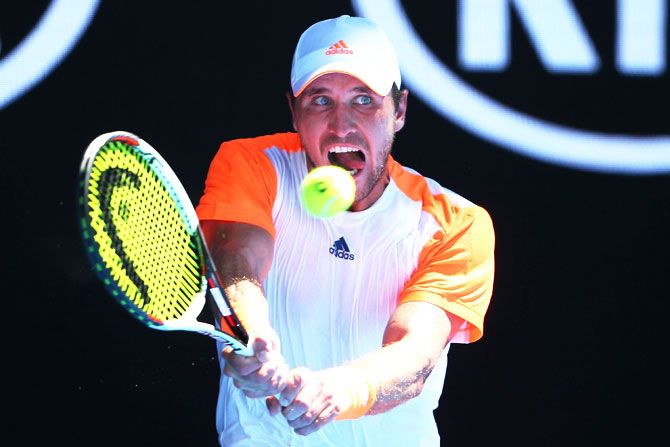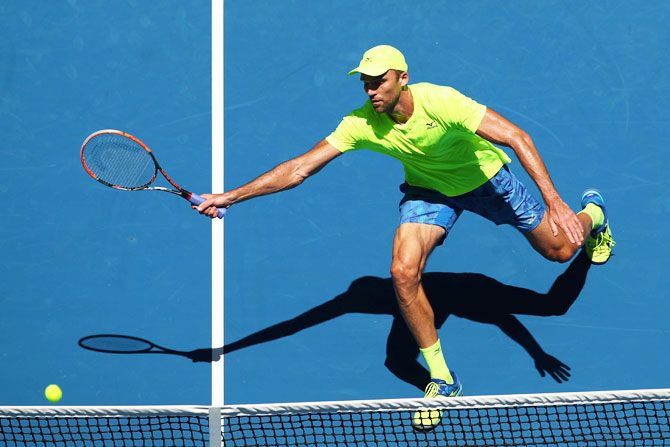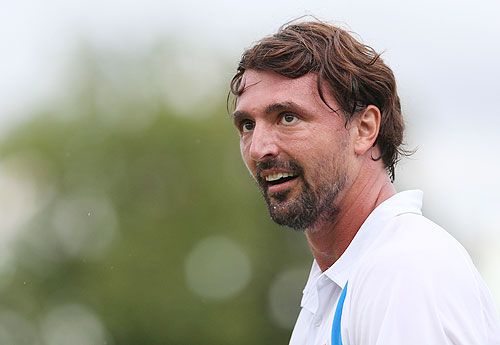Cash believes there will never be a return to the golden era of serve-and-volley tennis, however, not while the court speeds were so much slower than when he was winning at the All England Club.

It was John McEnroe who summed it up best. "You did it old school," he told Mischa Zverev after the German had beaten Andy Murray on Sunday.
Zverev's stunning upset of the top seed in the fourth round of the Australian Open was indeed a throwback to the days of the 1980s, when sticking to the baseline was something reserved only for clay courts.
"It was really impressive to watch," Pat Cash, who won Wimbledon in 1987, told reporters on Monday.
"To see a guy serve-volley on second serve and beat the world number one, who is allegedly one of the best returners and best passers of all time, and just get knotted up and not even able to hit a passing shot."
Pete Sampras at the 2002 US Open was the last man to win a grand slam title coming in behind first and second serves.
Since then, changes to racket and ball technology, homogenisation and a general slowing of surfaces have allowed baseliners to get the better of serve-and-volleyers.
But with the Melbourne Park courts this year generally considered to be faster than for a while, world number 50 Zverev took the attack to Murray throughout their match and it paid off handsomely.

While the likes of Roger Federer, Feliciano Lopez and Gilles Muller all come in behind their serves occasionally, Zverev and Ivo Karlovic are the only men in the top 50 who could be considered out-and-out exponents of the serve-and-volley game.
The 17-times grand slam champion Federer began to serve-and-volley more when he had former Wimbledon champion Stefan Edberg in his coaching set-up in 2014 and 2015.
Until then, the Swiss had occasionally tried it, but was often discouraged when he was passed at the net, immediately reverting to the baseline.
"As a serve-and-volleyer you sort of have to invest in it," former world number four Jonas Bjorkman told Reuters.
"Be ready to get passed, but you're investing mentally in putting pressure on your opponents.
"That obviously is tough because in the beginning anyone who learns to come forward will be feeling that they are doing something wrong when they get passed.
"You have to find that way of changing your mentality a little, because in the long run it's tough to play someone who comes in all the time and puts you under pressure. You have to accept that you're doing it to try to win the match."
The 29-year-old Zverev said it often takes time for serve-and-volleyers to reach their peak.

"You need to go to the net, get passed for two sets," he said.
"Like what happened with (John) Isner (in the first round), I lost two sets.
"I was still trying to stick to the same game plan. It kind of changes in the end. If it doesn't, then you just walk off the court, you say, 'Well done, you passed me too well'."
Goran Ivanisevic, who won Wimbledon in 2001, the year before the tournament changed the grass to slow down the conditions, said the surface in Melbourne was the key to Zverev's triumph.
"This grand slam rewards big hitters, if you hit big, it doesn't come back," he said.
Cash believes there will never be a return to the golden era of serve-and-volley tennis, however, not while the court speeds were so much slower than when he was winning at the All England Club.
"What serve-volleyers typically do, and what our plan was, was to get into your head," he said.
"And once you can get into a player’s head it makes it really tough. Even the simplest passing shot is really tough.
"But I don't think (it will come back in a big way). There are only about two people who can do it."







